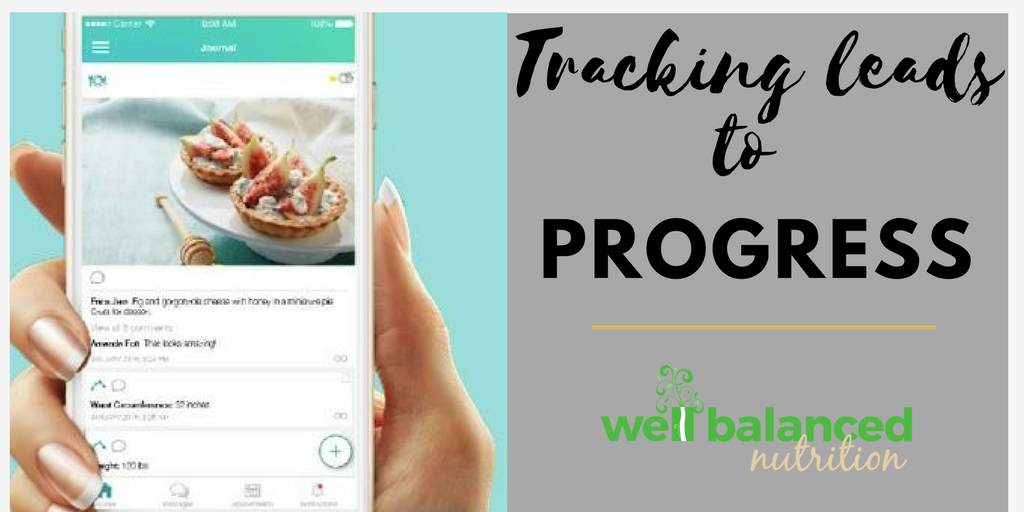
by Lucy | Aug 21, 2017 | Motivational Mondays
Monday, Aug 21, 2017
The other night, while reading Harry Potter and The Goblet of Fire, I got to thinking about my people. You know, the ones that make life more fun, doable, and interesting. I joke that God knows I am such a handful I needed two partners – one in life and one in business.
If you have ever been through tough times, you know how important relationships are. Whether it’s the relationships with your family, best friends, or church community we all want to know that we matter and have a sense of belonging. In Maslow’s hierarchy of needs, the need to feel loved and accepted is just above the need to be safe.
Back to Harry Potter, in the fourth book – The Goblet of Fire – Harry is competing in the Triwizard tournament. He is at least three years younger than his competitors and has less magical education, knowledge, and experience. Luckily, Harry has several helpers along his journey to give him the support he needs. For instance, his best friend, Hermione, helps them learn a summoning charm to successfully complete the first challenge. He also gets a tip from one of his fellow competitors for the second challenge, and so on throughout the story.
We cannot expect to reach our big goals alone. It is imperative to have support and help from others to succeed.
Who are you hanging out with?
Jim Rohn, a motivational speaker, says we are all the sum of the five people we spend the most time with. If your goal is to be fit and active, but all your social time is spent sitting at a friends house eating snack foods and drinking wine, is that helping you reach your goal?
In another example, we can look at Sarah’s story. Sarah has always been a healthy eater who also happens to enjoy sweets. She recently started dating a guy who loves all things chocolate. He takes candy with him everywhere and often brings chocolate to share with Sarah whenever they hang out. In the first six months of their relationship, Sarah was surprised to find she gained 8 pounds.
In life, there are helpers and hinderers when it comes to living well-balanced. We have friends and accomplices. Our friends genuinely want to help us and our accomplices want to help us… get in trouble.
Be the change
Before you go saying farewell to all of your friends or family members, let’s consider a few other options.
- Find a helper. Get someone on your team to support your health initiatives. This can be an accountability partner at the gym that encourages you to work out consistently. Or a coworker that is keeping a spreadsheet of your progress.
- Join the tribe! We have an active and fabulous Facebook group that provides ideas and encouragement to help you make healthy lifestyle changes.
- Train your people. I have a client who has successfully “trained” his guy friends that he does not drink alcohol on work nights. That means they do not offer him a beer or other drink if it’s Sunday through Thursday. This helps him continue to make good choices while still enjoying the social time.
- Get accountability. Find a friend, coach, or app that can support and encourage your healthy habits.
Food for thought: It’s never too late to ask for help. If you noticed your partner bringing more snack foods home lately and it’s affecting your habits, perhaps now is a good time to have a conversation about your goals and how the ones that love you most can help you reach them.
And while you’re at it, check out this accountability tool to help you get or stay on track! Just a few more days to sign up for 4 free weeks of the Healthy Habit Tracker.


by Lucy | Jul 31, 2017 | Motivational Mondays
Revised: Monday, July 31, 2017
“You cannot manage that which you do not measure.”
Peter Drucker
As dietitians, Kristen and I are big advocates of food journals. I know, I know… Oh, here it comes. This request is often scoffed at when brought up; however, a recent literature review suggests that self-monitoring is the cornerstone of behavioral weight-loss treatment. What’s more, is recognizing that keeping a food journal does not guarantee change; however, having a coach that is also keeping track of your progress can improve outcomes dramatically.
I sometimes ask clients to keep track of everything that’s going in – including food and beverages – before an initial assessment or follow-up. Similar to the doctor asking for blood samples, it is essential for a dietitian to know about your food habits. In reviewing our top posts about tracking, I discovered that every one of our #TransformationTuesday stories, such as “It’s a Journey, Latoyia’s Baby Steps are Paying off,” include some form of self-monitoring.
The good news is, keeping a food journal is not only easy and one of the most effective means of behavior change. It’s also a great way to keep yourself on track. You don’t have to be precise. Just be consistent. Try it! You might like it :-).
And MORE good news! We are now offering the Healthy Habit Tracker for a FREE 1-month trial when you sign-up in August. This handy tool is powered by Healthie, offering:
- EASY: No calories or points to worry about here. Simply snap a photo of your meals and snacks.
- ACCOUNTABILITY: Both you and your dietitian can see your entries which can keep you accountable.
- FEEDBACK: Get frequent feedback and non-judgemental advice from Well Balanced Nutrition dietitians
- FUN: take a healthy selfie (aka a Healthie!), track your workouts, rate your hunger and track your metrics so you can see how far you’ve come.


by Lucy | Jul 17, 2017 | Motivational Mondays
Monday, July 17, 2017
Last week while hanging out by the pool, a new friend, Katie, and I got to talking about body image, how we grew up, and our own habits. Katie is beautiful and full-figured. She exudes confidence in her body. Katie told me she enjoys her lifestyle – especially eating and drinking (and not much cooking). She does CrossFit a few times a week and works at a local pub bartending most nights. She explained that she recognizes her way of life prevents her from losing weight and states “I’m not worried about it because I’m comfortably chubby.” She has seen the diet and lifestyle of some CrossFit enthusiasts and decided that does not interest her. She is happily married and states, “my husband doesn’t like skinny girls anyway.”
Katie understands that we are all more than just a number on the scale or image in the mirror. How can you feel confident and comfortable regardless of your size or shape?
Find your body confidence through body kindness
There is so much conflicting information about how to live a healthy life. For instance, body mass index is the standard metric for determining who is normal-weight, overweight and obese, yet it can be argued that it is actually a poor tool for measuring health. Some argue Paleo is the best way to eat while others fight for a vegetarian lifestyle. The WHO recommends we exercise at least 150 minutes of exercise per week and The Washington Postpublished an article that 30 minutes of daily exercise is not enough.
Instead of worrying what the outside world says you should do or what you should look like, it’s time to listen to your body and treat yourself with kindness.
For our most recent book club adventure, Kristen and I read Body Kindness by Rebecca Scritchfield, a book about changing the way we talk to and treat ourselves. Instead of shaming and blaming our bodies, Scritchfield provides practical ways to start loving, connecting and caring for ourselves. She explains it as an upward spiral – each body kindness action will help you spiral up into making more healthy decisions.
Have you said something kind to yourself lately?
One of my mentors, Amy E. Smith of The Joy Junkie, explains that we all have an inner dialogue happening in our minds. This inner dialogue is how we identify and it makes up what we believe about ourselves and our world. In other words, we are always telling ourselves stories and regardless of whether they are true, we believe them and internalize them. Because this all happens quietly in our mind, we can often go without realizing the terrible things we think, believe and say about ourselves.
Ready to be kinder to yourself?
Here are 3 steps to improving your body image through kindness and compassion:
- Notice the voice or internal story – What does that little voice say when you look in the mirror? Does it exclaim how beautiful your eyes look today or is it nitpicking on a double chin or muffin top? The first step is to notice what that little voice says and recognize you are more than those thoughts.
- Identify the triggers – For some of us, the simple act of looking in the mirror can trigger our inner bully to come out and play. Others get a story in their mind when they step on the scale. For many of us, including myself, it’s all too easy to get caught up with the “compare and despair” of social media where someone is always fitter, stronger, happier, richer, more successful, and so on.
- Create a nicer way to speak to your body. Make one change – for example, if you’re constantly exclaiming about your fat thighs next time that voice comes up change direction. I like the simple “cancel, cancel, cancel” method to stop negative thoughts and I like to take advantage of the power of words by using mantras. I share healthy mantras for my clients to use, such as “every healthy change I make creates a healthier body.”

Food for thought:
What’s the story in your mind? Studies suggest that 91% of women are unhappy with their bodies. We don’t have to live with the hurt of striving for an unrealistic image. Let us know in the comments below what you will do to improve your body image this week :-). We’d love to cheer you on!
Are you ready to feel confident in your body? Contact us today to set up your own personal wellness adventure.


by Lucy | Jul 1, 2017 | Motivational Mondays
Monday, June 26, 2017
Growing up, my mom always called me her “journey girl.” Then I got to college and had to get to class, keep up with the other hyperactive dietetic students, and juggle school work with an active social life (good ol’ University of Dayton memories). For a while, life became less about the journey and more about getting to my next destination. 
Thankfully, in 2014, I got a message from the universe – God – that it was time to get back to my roots. Over the past couple years, Kristen and I have brought you different methods of mindfulness, especially mindful eating techniques. Today I want to share an example of how learning to love the journey will help you be happier and healthier.
The worry effect
I have a friend, we will call Wendy, who lives life little bit like Rabbit from the cartoon Winnie the Pooh. Wendy is constantly talking about all of the many stressful parts of her life such as being a nanny to her 2 young nieces, keeping up with the projects she has promised to her friends, and worrying about what is going on at the White House. I get it! There is plenty in this world to worry about. However, Wendy wants to be healthier, happier, and lighter. She noticed while traveling and taking a 6-week respite from the nannying job that she did not restrict her eating (and enjoyed some “high test beer”) yet she lost 2 pounds on her vacation. Wendy found when she incorporated joyful movement, such as walking to enjoy the sites and scenery it no longer felt like dreaded exercise. And when she mindfully enjoyed small tastes of the local foods and beverages she did not overindulge. On vacation, Wendy was present, peaceful, and making mindful decisions, which helped her mind and body relax. When we are under stress our bodies secrete cortisol and adrenaline, which we term a fight-or-flight response. At the same time, decreasing the output of human growth hormone, which is responsible for stimulating growth and cell reproduction. If you live in a constant state of worry or stress it is likely your body is perpetually in a fight-or-flight response hormonally. In fight-or-flight, the body responds by increasing blood pressure and glucose (sugar in the blood), while decreasing the immune system.
Food for thought
If you can relate to Wendy’s story, and you are ready to start enjoying your journey, the first step is to take a moment to reflect and identify your own fears, worries, negative thoughts, and stressors.
Next step, as my wise Uncle Ron recommends we need to ask, what’s in my control to change and what do I need to let go? Aside from talking to your local representatives, there is not much you can do about the situation in Washington DC. If you find your habit is to listen to the news or read the headlines first thing in the morning, only to spend the day worrying about all that bad news, perhaps you can let that go or choose to read those updates less frequently.
Lastly, let’s make it a priority to include activities in our lives that will make us feel happy and better cope with the circumstances we cannot change. As we know from all the safety training on the airplanes, it is vital that you put on your own oxygen mask first. What’s one thing you can add to your morning routine or day that will feel good and inspire you to make other choices that feel good? Tell us in the comments below to share a bit of inspiration and happy habit ideas!


by Lucy | May 3, 2017 | Motivational Mondays
Monday, May 1, 2017
Like many of you, Christina is a busy professional who is in a position of leadership. She was a pretty healthy gal before she started coming to see me, but she wanted to do even better, especially as a leader in the office. Her wellness WINS are highlighted below. Her story is a reminder of how our behaviors not only impact our own lives but also those with whom we work.
Making self-care a priority
Christina hates running but she found that training for a 5K and 10K race last year kept her inspired to exercise consistently. She pushed herself because she knew being active was important for her health. To fuel her life she enjoys healthy vegetarian foods. She especially loves anything with chickpeas and fresh vegetables.
Inspiring and encouraging others
Not only do Christina’s coworkers notice and get inspired by her healthy meals she brings from home every day but they also see her taking an active role on the employee wellness team. Plus, after enjoying a fun well-balanced walking session with me around downtown Durham, she incorporated walking meetings with her staff. How fun is that!?
She also cares about her friends and encourages them to adopt healthy habits. One example includes suggesting busy professional friends invest in a meal delivery service, which can make it easier to prepare fresh and well-balanced meals at home. Click here if a meal delivery service sound interesting to you.
Now it’s your turn.
A healthy and happy team is a more motivated and productive team. Here are 3 healthy leadership tips we can all learn from Christina.
-
Lead by example – It starts with you. Christina found an exercise strategy that worked for her. She also packs her lunch with leftovers and keeps healthy balanced options in her desk, like that can of chickpeas :-P.
-
Make it fun and do what you can – Would you rather sit windowless office for meetings or enjoy some sunshine? Take your team out for a walk like Christina or break up your long meeting with a fun mini activity break. It does not need to be a sweat session, just let everyone get up or get out and move their bodies.
-
Provide/create a nurturing environment– Donuts and candy dishes look fun but often leave people feeling guilty or sluggish after the sugar buzz wears off. Do you have sliced veggies and a fruit for an easy colorful side dish with lunch or dinner? To live healthy and happy we need to set ourselves (and others) up for success, y’all. Check out Kristen’s blog for a few more ideas.
Food for thought
We have an opportunity to positively impact those around us, whether it’s our family, friends or coworkers. How are you leading yourself and others to healthy habits?
Which healthy leadership strategy are you already rocking?! Let us know in comments below or give a shout out to the healthy role model in your life!


by Lucy | Apr 14, 2017 | Motivational Mondays
Sunday, April 16, 2017
I originally heard this phrase, “do first what is most important,” from pastor Kendrick Vinar at Grace Church. It applies to all parts of life. Especially important when we are distracted by shiny objects all day, every day. (Yea, I’m looking at you Pinterest and my shiny new iPad)
Often, folks tell Kristen or me about how they want to live healthier, eat better, include more exercise, and manage their stress; however, they just don’t have time.
Then there are examples like a Jeanie. Jeanie is a dental hygienist at a busy community dental clinic and has been trying to lose weight for the past six months. Each time we meet, Jeanie has a new kitchen tool or smartphone application that is going to fix all her unhealthy habits. Then, the next month there is another new program or app that she’s found. Most of these tools have helped her figure out what is not going to work. It wasn’t until the celiac diagnosis that inspired Jeanie to make some real some changes. For those of you unfamiliar with this disease, Celiac disease is an autoimmune condition that damages the small intestine after ingesting gluten. It occurs in 1 out of 133 American’s – about 1% of the population – and has contributed to some of the gluten-free craze, which is currently sweeping our nation.
Back to Jeanie’s story, after being diagnosed she quickly made many changes to her schedule to make time to cook, which she previously assured me she had no time for. She found support groups and contacted her favorite dietitian to get started. Then, she bought a cookbook with a gluten-free meal plan to help learn how to cook/eat without gluten. For her health, Jeanie knows this diet and lifestyle change needs to become permanent, unlike previous efforts that have come and gone. That’s why she has put this at the top of her priority list and made taking care of herself and her health most important during this transition.
Too often, I see people putting their health at the bottom of the proverbial to-do list.
| She has put this at the top of her priority list and made taking care of herself and her health most important during this transition. |
Food for thought:
What is at the top of your priority list? That’s easy to figure out by looking at what is on your calendar or to-do list.
What habit or shiny object is currently taking your time or energy from focusing on your health?
If you gave up a “bad habit” during the Lenten season, do you really need to re-introduce that habit, food, or beverage just because today is Easter?
Do you first what is most important.











